Last updated: December 14, 2021
Article
Transfer Print Ceramics at Fort Vancouver
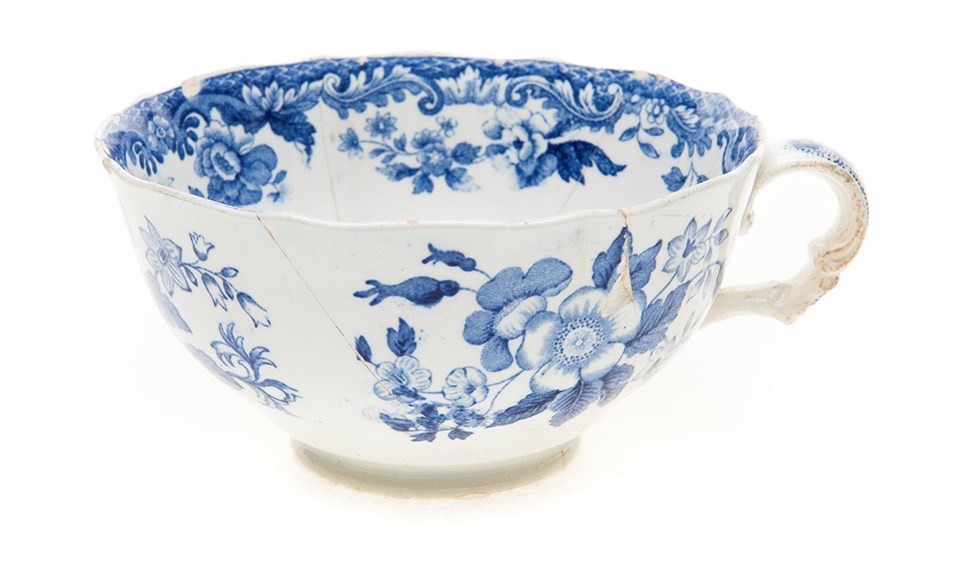
NPS Photo, FOVA 36438
Fragments of transfer printed ceramic vessels are frequently found in the archaeology of the fur trade at Fort Vancouver. This type of ceramic often accounts for 50% of archaeologically recovered ceramics! Their frequency at Fort Vancouver is not surprising as transfer printed ceramics were the most common type of tableware and toiletry vessels produced by England's Staffordshire potteries during the early to mid-19th century.
Transferwares are made of white earthenware and decorated using the transfer print process. This involves transferring a design from an engraved copper plate to the ceramic vessel. This process is detailed here.
The transfer print process was invented in England around 1750, variously attributed to the Battersea enamel factory, the Worcester china factory, and the firm of Sadler and Green of Liverpool. The process was further developed independently by both Josiah Spode and Josiah Wedgwood after 1760. Prior to this point, all potteries were reliant on artists to hand apply decorative elements either under or over glaze, with paint brushes, sponges, or drip pots. With the invention of transfer printing, ceramics could be decorated by transferring the designs from engraved copper plates using inked papers. Once fired and glazed, this technique produced a finely detailed, durable design that could be reproduced in the thousands. The process revolutionized the production of Staffordshire ceramics in the late 18th century and became the predominant decoration technique applied by these potteries throughout the 19th century.
Transferwares are made of white earthenware and decorated using the transfer print process. This involves transferring a design from an engraved copper plate to the ceramic vessel. This process is detailed here.
The transfer print process was invented in England around 1750, variously attributed to the Battersea enamel factory, the Worcester china factory, and the firm of Sadler and Green of Liverpool. The process was further developed independently by both Josiah Spode and Josiah Wedgwood after 1760. Prior to this point, all potteries were reliant on artists to hand apply decorative elements either under or over glaze, with paint brushes, sponges, or drip pots. With the invention of transfer printing, ceramics could be decorated by transferring the designs from engraved copper plates using inked papers. Once fired and glazed, this technique produced a finely detailed, durable design that could be reproduced in the thousands. The process revolutionized the production of Staffordshire ceramics in the late 18th century and became the predominant decoration technique applied by these potteries throughout the 19th century.
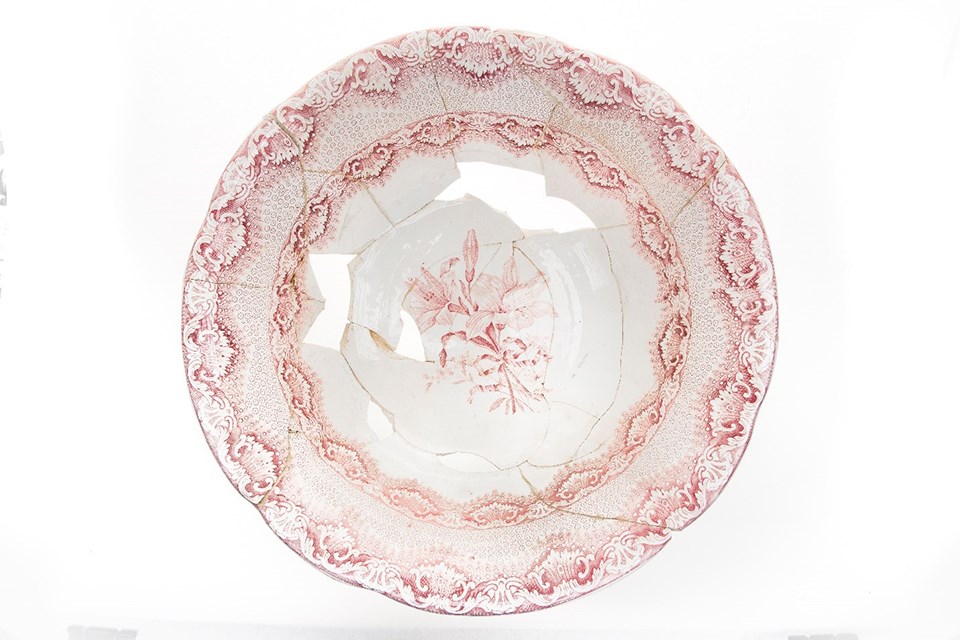
NPS Photo, FOVA 1698
Within the museum collection at Fort Vancouver National Historic Site, almost 90% of the transfer printed ceramics are from one manufacturer: the Spode Company. From 1836 to 1847, the Hudson's Bay Company (HBC) had a nearly exclusive contract with the Spode Company to import their ceramics to the HBC's outposts in North America. The Spode Company was later called Copeland & Garrett, and W.T. Copeland & Sons. It will be referred to here as the Spode Company for simplicity.
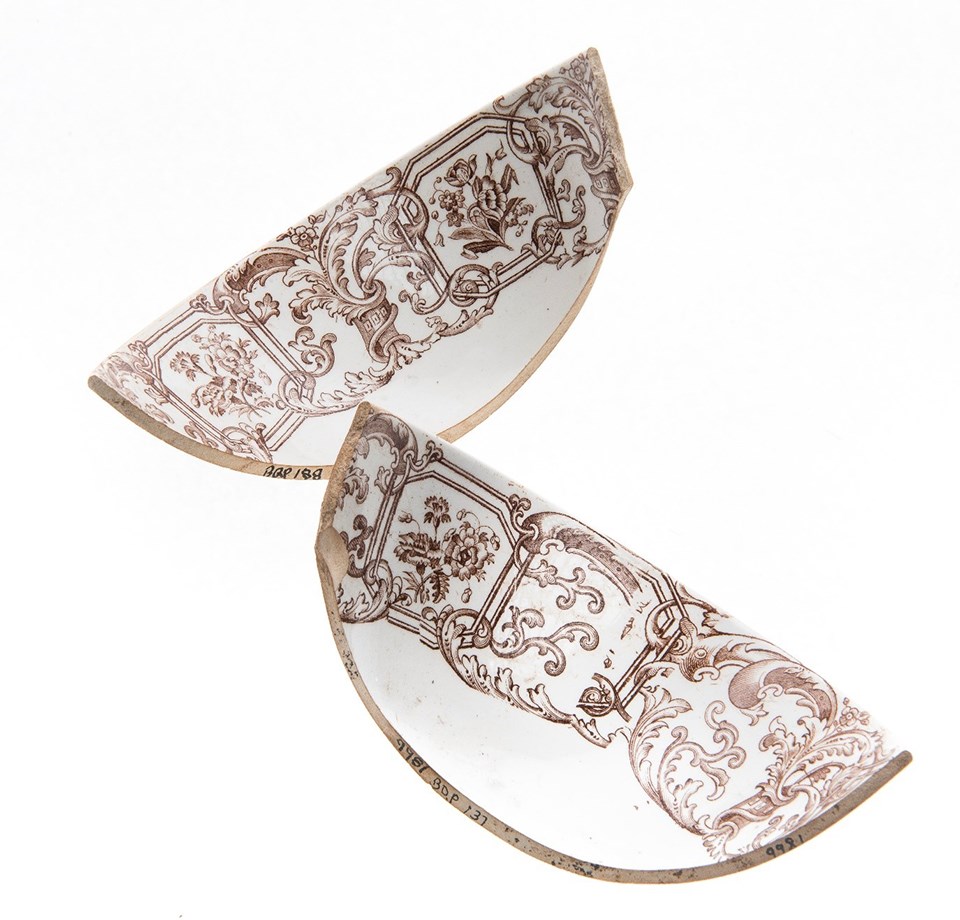
NPS Photo, FOVA 9981
The Fort Vancouver museum collection contains at least 98 transfer print patterns. These are dominated by Spode, with 64 patterns. An additional 16 transfer print patterns produced by other Staffordshire potteries are identified by pattern name and manufacturer. As of 1976, analysts recorded 18 other transfer print patterns in the collection that are unidentified. It is likely that additional unidentified patterns exist within the current collection.
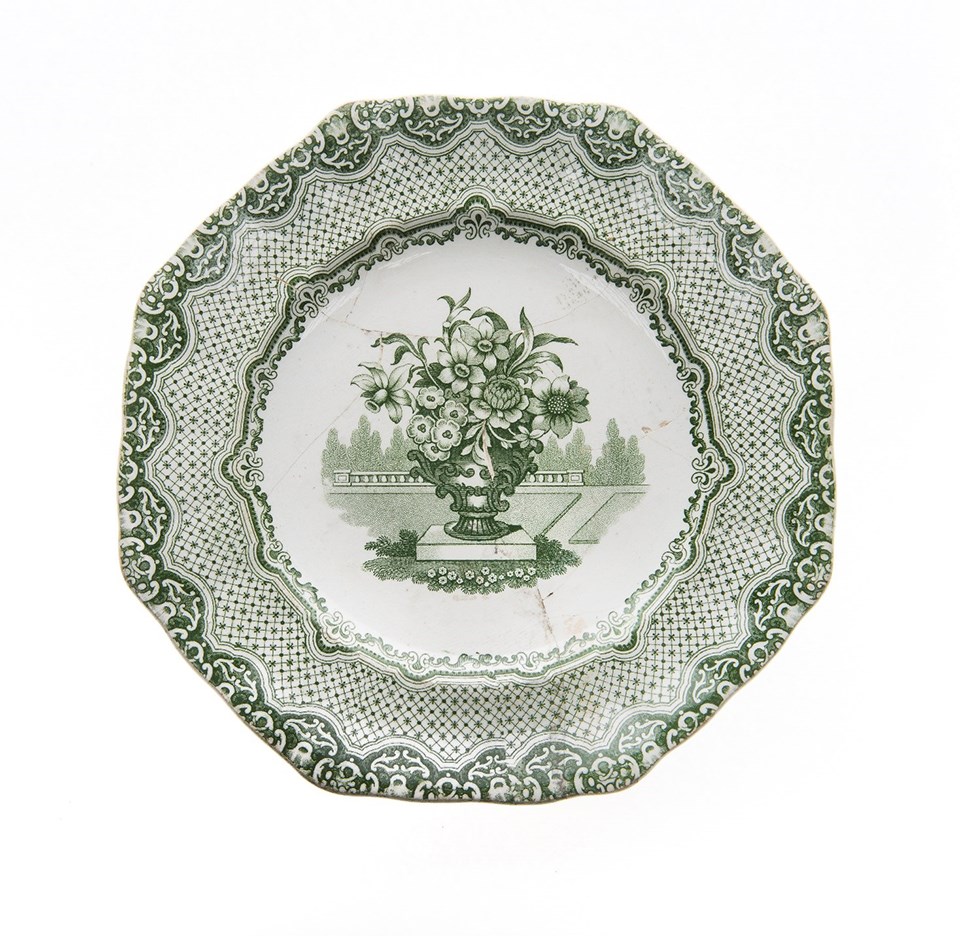
NPS Photo, FOVA 1739
These patterns represent a wide variety of themes. Some patterns represent landscapes - either European or European interpretations of scenes in Asia. Other patterns contained floral or geometric designs, or images with moral lessons based on fables. The patterns came in a wide variety of colors. A medium to dark cobalt blue was the most common color, but other patterns came in brown, red, pink, purple, green, and black, as well as a dark blue "flow."
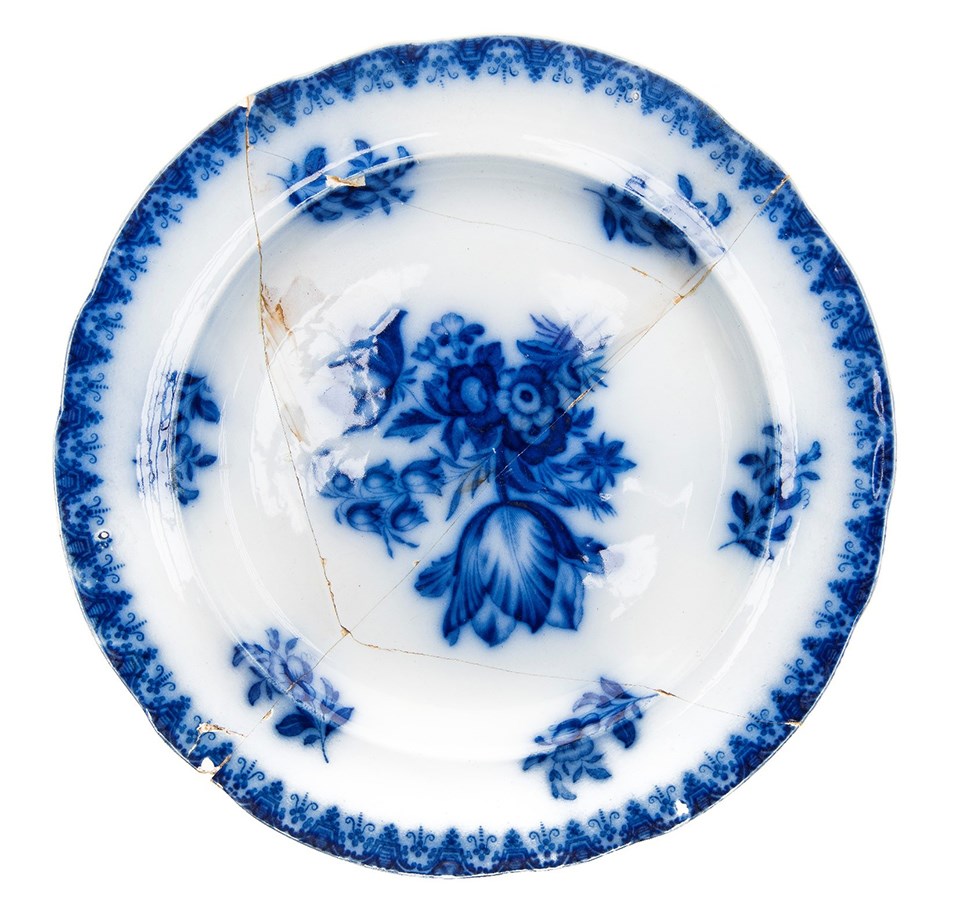
NPS Photo, FOVA 325
One pattern, "Delhi," post-dates the HBC occupation of Fort Vancouver and was likely imported by suppliers to the U.S. Army's Vancouver Barracks, established in 1849, or the nearby Catholic St. James Mission. Although there are many other transfer print patterns in the Fort Vancouver National Historic Site museum collection that date to this military period, Delhi is the only pattern manufactured by the Spode Company so far identified.

NPS Photo, FOVA 19616
Records kept by clerks at Fort Vancouver indicate that over 400 Spode ceramic vessels were imported to the fort and available for sale every year. In addition to transferwares, other types of ceramics were also available, such as undecorated earthenwares, various hand-decorated earthenwares and stonewares. These could be purchased from the Sale Shop by employees for use in their households. Transfer print vessels came in a range of forms including tablewares, teawares, and toilet sets. Transferware was one of the more expensive types of ceramics available for purchase at the fort's Sale Shop.
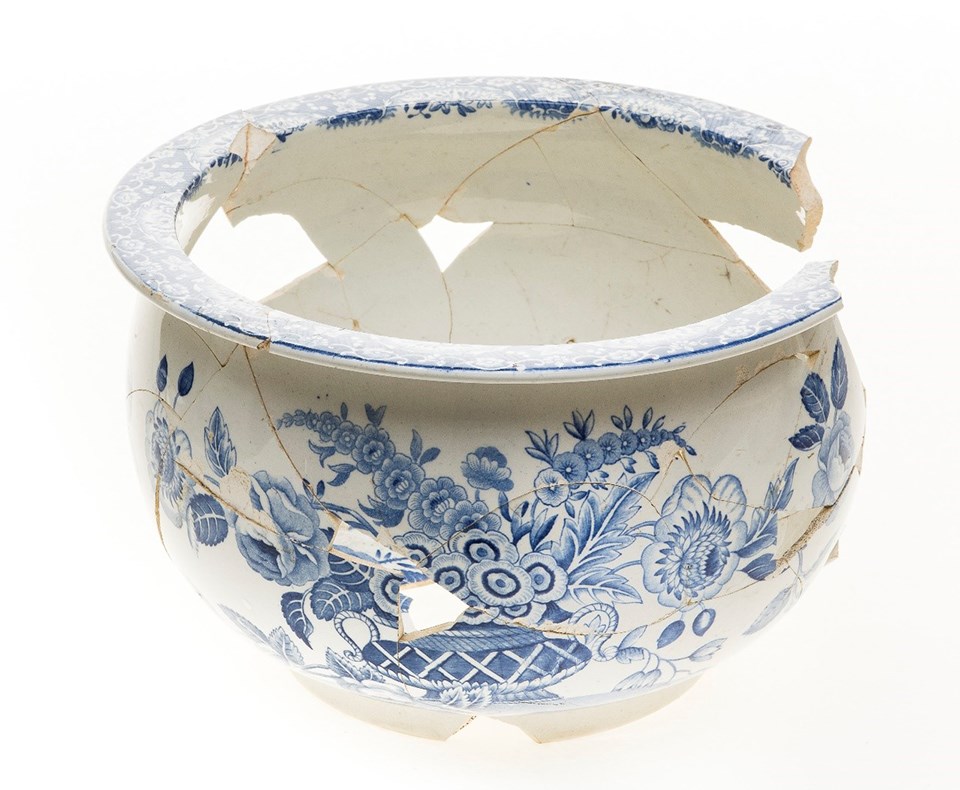
NPS Photo, FOVA 2188
Despite this higher cost, transfer printed ceramic fragments are found in the archaeological record of virtually all fur trade households at Fort Vancouver. This includes the Chief Factor's House at the top of the hierarchy, all the way down to the households in the fort's employee Village. This commonality across socioeconomic levels and ethnic groups has inspired archaeologists to study the ceramics to learn more about their use and significance. More about archaeologists' analysis of the ceramics in the Fort Vancouver museum collection can be found here.
The staff at Fort Vancouver National Historic Site have created a guide to the types of Spode transferwares archaeologically recovered at the fort. This booklet is one way that the national park's Cultural Resources staff bring you "inside the collection" to experience the resources of this fascinating national historic site! Download a sample of this booklet below, and email us for a PDF of the full booklet.
The staff at Fort Vancouver National Historic Site have created a guide to the types of Spode transferwares archaeologically recovered at the fort. This booklet is one way that the national park's Cultural Resources staff bring you "inside the collection" to experience the resources of this fascinating national historic site! Download a sample of this booklet below, and email us for a PDF of the full booklet.
